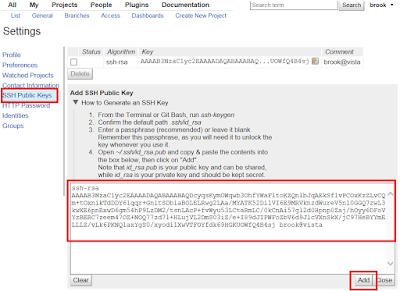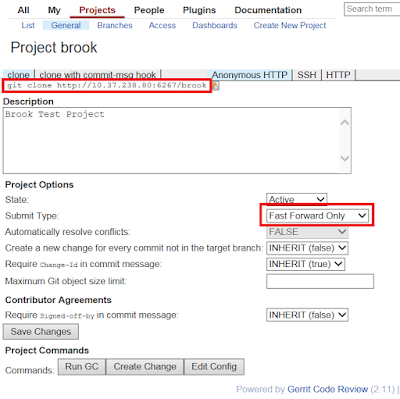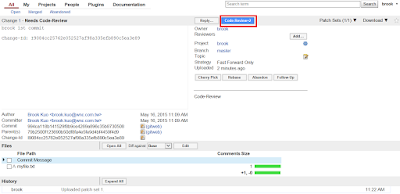SDK包含了開發時所需的相關檔案,有些還包含了整個開發環境(tool/command),避免系統的tool/command跟SDK需要的不同造成的error,一個SDK應該包含以下內容:(YOCTO Slides)
- Compilers or cross-compilers
- Linkers
- Library headers
- Debuggers
- Custom utilities
這篇文章就是在介紹如何使用Openembedded建立一個generic SDK供他人開發application,使用指令bitbake -v meta-toolchain即可產生generic SDK,並產生一個install的script,放置於oe/oe-core/build/tmp-eglibc/deploy/sdk/底下,執行過程如下
brook@vista:/home/brook/oe/oe-core/build$ bitbake -v meta-toolchain ... + chmod +x /home/brook/oe/oe-core/build/tmp-eglibc/deploy/sdk/oecore-x86_64-armv7a-vfp-neon-toolchain-oe-core.0.sh + cat /home/brook/oe/oe-core/build/tmp-eglibc/deploy/sdk/oecore-x86_64-armv7a-vfp-neon-toolchain-oe-core.0.tar.bz2 + rm /home/brook/oe/oe-core/build/tmp-eglibc/deploy/sdk/oecore-x86_64-armv7a-vfp-neon-toolchain-oe-core.0.tar.bz2 NOTE: Tasks Summary: Attempted 1685 tasks of which 1312 didn't need to be rerun and all succeeded. brook@vista:/home/brook/oe/oe-core/build$ tree tmp-eglibc/deploy/sdk/ tmp-eglibc/deploy/sdk/ `-- oecore-x86_64-armv7a-vfp-neon-toolchain-oe-core.0.sh 0 directories, 1 file
接著直要將底下的script(oecore-x86_64-armv7a-vfp-neon-toolchain-oe-core.0.sh)給developer開發即可,-d後面帶安裝目錄,安裝過程需要SUDO權限,
brook@vista:/home/brook/oe/oe-core/build$ ./tmp-eglibc/deploy/sdk/oecore-x86_64-armv7a-vfp-neon-toolchain-oe-core.0.sh --help Usage: oecore-x86_64-armv7a-vfp-neon-toolchain-oe-core.0.sh [-y] [-d <dir>] -y Automatic yes to all prompts -d <dir> Install the SDK to <dir> ======== Advanced DEBUGGING ONLY OPTIONS ======== -S Save relocation scripts -R Do not relocate executables -D use set -x to see what is going on brook@vista:~$ /home/brook/oe/oe-core/build/tmp-eglibc/deploy/sdk/oecore-x86_64-armv7a-vfp-neon-toolchain-oe-core.0.sh -d /opt/oe -D + printf 'Enter target directory for SDK (default: /usr/local/oecore-x86_64): ' Enter target directory for SDK (default: /usr/local/oecore-x86_64): + '[' /opt/oe = '' ']' + echo /opt/oe /opt/oe ... + '[' 0 = 0 ']' + /usr/bin/sudo rm /SSD/opt/oe/relocate_sdk.py /SSD/opt/oe/relocate_sdk.sh + echo 'SDK has been successfully set up and is ready to be used.' SDK has been successfully set up and is ready to be used. + exit 0
要使用SDK之前,必須先source安裝目錄下開頭為environment-setup-的script,設置相關的環境變數,我的script內容如下
export PATH=/SSD/opt/oe/sysroots/x86_64-oesdk-linux/usr/bin:/SSD/opt/oe/sysroots/x86_64-oesdk-linux/usr/bin/armv 7a-vfp-neon-oe-linux-gnueabi:$PATH export PKG_CONFIG_SYSROOT_DIR=/SSD/opt/oe/sysroots/armv7a-vfp-neon-oe-linux-gnueabi export PKG_CONFIG_PATH=/SSD/opt/oe/sysroots/armv7a-vfp-neon-oe-linux-gnueabi/usr/lib/pkgconfig export CONFIG_SITE=/SSD/opt/oe/site-config-armv7a-vfp-neon-oe-linux-gnueabi export CC="arm-oe-linux-gnueabi-gcc -march=armv7-a -mthumb-interwork -mfloat-abi=softfp -mfpu=neon -mthumb-inte rwork --sysroot=/SSD/opt/oe/sysroots/armv7a-vfp-neon-oe-linux-gnueabi" export CXX="arm-oe-linux-gnueabi-g++ -march=armv7-a -mthumb-interwork -mfloat-abi=softfp -mfpu=neon -mthumb-int erwork --sysroot=/SSD/opt/oe/sysroots/armv7a-vfp-neon-oe-linux-gnueabi" export CPP="arm-oe-linux-gnueabi-gcc -E -march=armv7-a -mthumb-interwork -mfloat-abi=softfp -mfpu=neon -mthumb-interwork --sysroot=/SSD/opt/oe/sysroots/armv7a-vfp-neon-oe-linux-gnueabi" export AS="arm-oe-linux-gnueabi-as " export LD="arm-oe-linux-gnueabi-ld --sysroot=/SSD/opt/oe/sysroots/armv7a-vfp-neon-oe-linux-gnueabi" export GDB=arm-oe-linux-gnueabi-gdb export STRIP=arm-oe-linux-gnueabi-strip export RANLIB=arm-oe-linux-gnueabi-ranlib export OBJCOPY=arm-oe-linux-gnueabi-objcopy export OBJDUMP=arm-oe-linux-gnueabi-objdump export AR=arm-oe-linux-gnueabi-ar export NM=arm-oe-linux-gnueabi-nm export M4=m4 export TARGET_PREFIX=arm-oe-linux-gnueabi- export CONFIGURE_FLAGS="--target=arm-oe-linux-gnueabi --host=arm-oe-linux-gnueabi --build=x86_64-linux --with-libtool-sysroot=/SSD/opt/oe/sysroots/armv7a-vfp-neon-oe-linux-gnueabi" export CFLAGS=" -O2 -fexpensive-optimizations -frename-registers -fomit-frame-pointer" export CXXFLAGS=" -O2 -fexpensive-optimizations -frename-registers -fomit-frame-pointer -fpermissive" export LDFLAGS="-Wl,-O1 -Wl,--hash-style=gnu -Wl,--as-needed" export CPPFLAGS="" export OECORE_NATIVE_SYSROOT="/SSD/opt/oe/sysroots/x86_64-oesdk-linux" export OECORE_TARGET_SYSROOT="/SSD/opt/oe/sysroots/armv7a-vfp-neon-oe-linux-gnueabi" export OECORE_ACLOCAL_OPTS="-I /SSD/opt/oe/sysroots/x86_64-oesdk-linux/usr/share/aclocal" export OECORE_DISTRO_VERSION="20151225" export OECORE_SDK_VERSION="oe-core.0" export PYTHONHOME=/SSD/opt/oe/sysroots/x86_64-oesdk-linux/usr export ARCH=arm export CROSS_COMPILE=arm-oe-linux-gnueabi-
以下是我用這SDK編譯一個檔案,並放入target中執行
brook@vista:~$ source /opt/oe/environment-setup-armv7a-vfp-neon-oe-linux-gnueabi
brook@vista:~$ cat main.c
#include <stdio.h>
int main(int argc, char *argv[])
{
printf("hello\n");
return 0;
}
brook@vista:~$ $CC -o brook-sdk main.c
D:\Projects>adb push z:\brook-sdk /
688 KB/s (5644 bytes in 0.008s)
D:\Projects>adb shell chmod +x /brook-sdk
D:\Projects>adb shell /brook-sdk
hello
開發環境架構圖




























